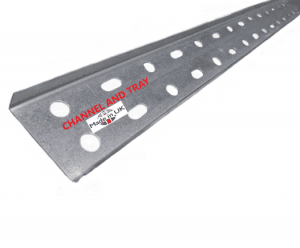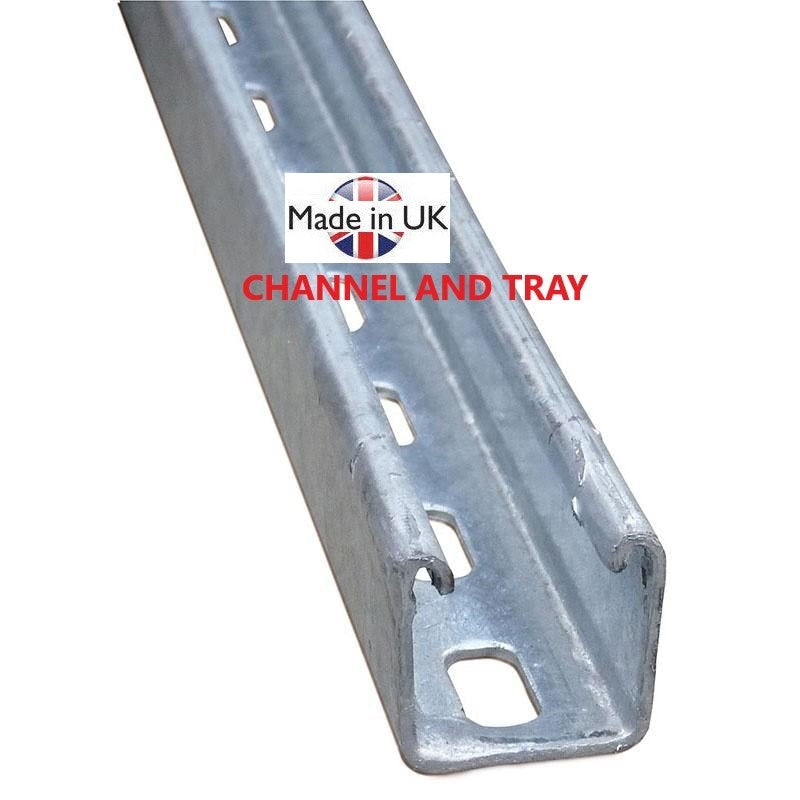Cable Tray is the ones that silently support the backbone of modern technology. While often overlooked, cable trays play a crucial role in ensuring the efficient and organized distribution of electrical cables in various residential, commercial, and industrial settings.
From power cables to data cables, communication lines to fiber optics, cable trays provide the structural support and protection necessary to keep these vital conduits organized, secure, and easily accessible. With their versatile designs and installation options, cable trays have revolutionized the way electrical systems are managed, facilitating maintenance, repairs, and future expansion.

In this blog, we will be discussing what are cable trays, shedding light on their purpose, construction, and installation methods. We will explore their numerous advantages, including improved cable organization, protection against external factors, and enhanced accessibility for maintenance. Furthermore, we will examine the diverse range of cable trays types, from ladder designs to solid-bottom and wire-mesh variations, each tailored to specific needs and applications.
What is a cable tray?
Cable trays are structural system used to support and manage electrical cables and wires in various commercial, industrial, and residential buildings. It is designed to provide a safe and organized pathway for routing cables, thereby facilitating maintenance, repairs, and future cable installations.
Types of Cable Tray
There are two main types of cable trays: open and enclosed.
- Open cable trays are the most common type of cable tray. They are made of metal or plastic and have a series of open channels that allow the cables to be routed through them. Open cable trays are typically used in areas where access to the cables is required, such as in maintenance areas or in areas where the cables may need to be replaced.
Enclosed cable trays are made of metal or plastic and have a solid bottom and sides. They are used to protect the cables from damage and to prevent them from being seen. Enclosed cable trays are typically used in areas where the cables do not need to be accessed, such as in ceilings or walls.

Cable Tray Installation
A cable tray can be installed in a variety of ways, depending on the type of cable tray and the application. In general, cable trays installation involves the following steps:
- Select the appropriate type of cable trays for the application.
- Assemble the cable trays according to the manufacturer’s instructions.
- Secure the cable trays to the structure using the appropriate hardware.
- Route the cables through the cable trays.
- Secure the cables to the cable trays using the appropriate hardware.
Cable Tray Maintenance
Cable tray maintenance is relatively simple and can be performed by a qualified electrician. The following are some of the tasks that should be performed as part of regular cable trays maintenance:
- Inspect the cable trays for damage
- Clean the cable trays to remove dirt, debris corrosion
- Tighten any loose hardware
- Replace any damaged cables and cable trays components
By following these simple steps, you can help to ensure that your cable trays system is properly maintained and will provide many years of reliable service.
Sizes of cable tray
Channel and Tray offer cable trays in a range of sizes to accommodate different cable diameters and installation environments.
The available sizes include:
- Small Cable Trays: Ideal for managing low-voltage and data cables in residential or small-scale commercial settings.
- Medium Cable Trays: Suitable for moderate cable volumes in commercial and light industrial applications.
- Large Cable Trays: Designed for heavy-duty applications, large-scale industrial installations, and power distribution systems.
Functions of cable tray
Cable trays serve several important functions as they provide a safe and secure way to support and protect electrical cables and wires. Moreover, they help to organize and manage cables and wires, which can make it easier to troubleshoot problems and make repairs. Additionally, cable trays can help to improve the appearance of an electrical installation.
Cable tray manufactured, exported, and supplied by Channel and Tray
Channel and Tray is a leading manufacturer, exporter, and supplier of cable trays. The company offers a wide variety of cable tray products, including perforated cable trays, ladder-type cable trays, and raceways. Channel and Tray products are made from high-quality materials and are designed to meet the needs of a variety of applications.
Benefits of using cable tray
There are many benefits to using cable trays. Some of the most important benefits include:
Cable Support:
Cable trays provide sturdy support for various types of electrical cables, including power cables, data cables, and communication cables. They prevent sagging, bending, and damage that can occur when cables are left unsecured.
Cable Protection:
By encasing cables within a robust structure, cable trays shield them from external factors like mechanical stress, environmental hazards, and corrosive substances. This protection extends the lifespan of the cables, reducing maintenance costs and downtime.
Cable Routing and Organization:
Cable trays offer a systematic and organized pathway for cables, facilitating easy cable routing and identification. The proper organization simplifies cable maintenance, repairs, and upgrades, saving time and effort during installations or troubleshooting.
Enhanced Safety:
Cable trays ensure compliance with safety regulations by minimizing the risk of cable entanglement, electrical shorts, and fire hazards. They also allow for efficient heat dissipation, preventing cable overheating and potential fire incidents.
Flexibility and Adaptability:
With modular designs and accessories like bends, tees, and junctions, cable trays can be easily adapted to changing cable layouts or building expansions. This flexibility makes them a cost-effective choice for evolving electrical systems.
If you are looking for a safe, secure, and organized way to support and protect your electrical cables and wires, then a cable tray is the perfect solution.
Channel and Tray is the top cable tray manufacturer and supplier in the UK. The company offers a wide variety of cable tray products to meet the needs of a variety of applications.
Conclusion:
Channel and Tray’s comprehensive range of cable trays serves as a testament to their commitment to providing top-notch solutions for effective cable management. Their manufactured, exported, and supplied cable trays are available in various sizes, ensuring compatibility with diverse installation requirements. By incorporating cable trays into electrical infrastructure, organizations can enhance safety, streamline cable management, and optimize overall system performance.





